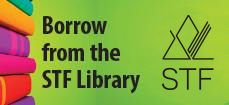Speak clearly and audibly in an appropriate sequence for a familiar audience and a specific purpose when recounting stories and experiences, giving directions, offering an opinion and providing reasons, and explaining information and directions.
| (a) |
Use oral language to initiate and sustain a conversation with a number of exchanges, interact with others, exchange ideas on a topic, and engage in play. |
| (b) |
Select and use task-relevant before, during, and after strategies when speaking to communicate meaning. |
| (c) |
Understand and apply the appropriate cues and conventions (pragmatic, textual, syntactical, semantic/lexical/morphological, graphophonic, and other) to construct and communicate meaning when speaking. |
| (d) |
Recount experiences, stories (including contemporary and traditional First Nations and Métis stories), or current events, in a logical sequence and with necessary details. |
| (e) |
Report on a topic with facts and details, drawing from several sources of information. |
| (f) |
Deliver brief recitations (e.g., recite poems, rhymes, verses, and finger plays), participate in choral readings, and give oral presentations about familiar experiences or interests, organized around a coherent focus. |
| (g) |
Give directions to help or explain. |
| (h) |
Make relevant contributions to class discussions and take turns. |
| (i) |
Dramatize a scene from a folktale or traditional First Nations or Métis narrative. |
| (j) |
Explain how new ideas and information have added to understanding. |


Set in a small American town prior to the civil rights movement, the theme of segregation in this video offers opportunities for discussion of issues or discrimination and racism.


